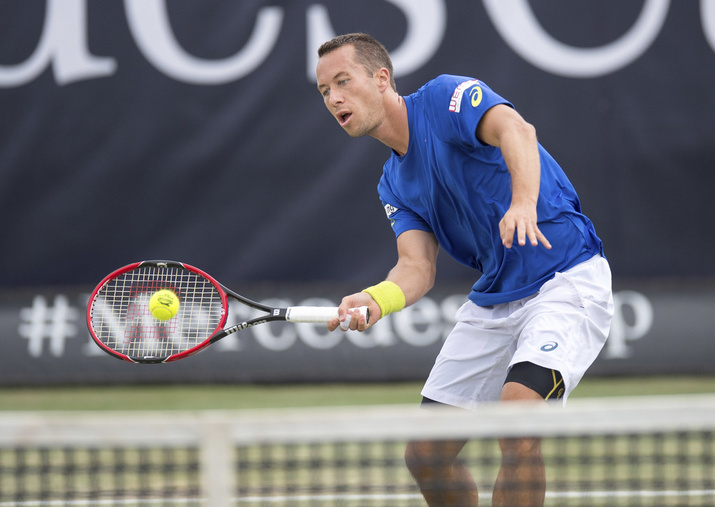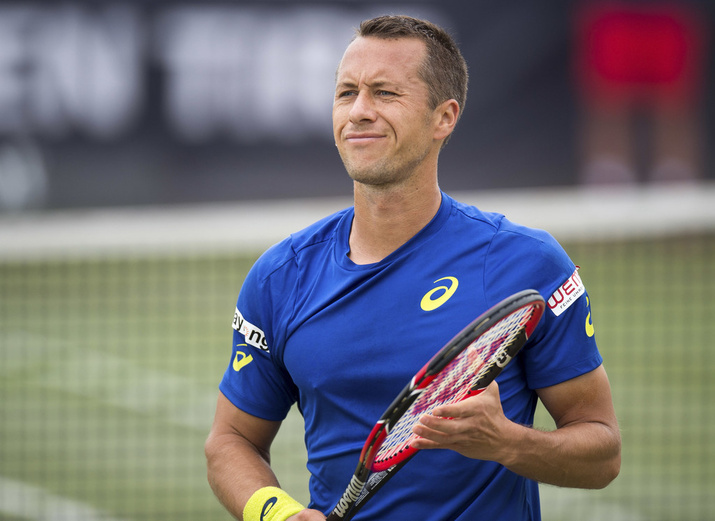Don't miss any stories → Follow Tennis View
FollowPhilipp Kohlschreiber: Another ATP Late Bloomer?
The ATP tour is littered with the dashed hopes and unrealized potential of players on the brink of brilliance. Several French players immediately come to mind – Richard Gasquet, Jo Wilfried Tsonga, and Gael Monfils. Across the border, in a country known for producing multiple Grand Slam champions on the ATP and WTA Tours, Philipp Kohlschreiber first picked up a tennis racket at age four.
Playing on the heels of the tremendous successes of six-time Grand Slam champion Boris Becker, world No. 2 Tommy Haas, and world No. 4 Nicolas Kiefer, is it any wonder Kohlschreiber has not lived up to his potential? Blessed with soft hands and quick feet, he reached a career high ranking of No. 16 in the world in 2012. Currently ranked No. 22 on the ATP World Tour, the 32-year-old claimed his seventh career title and third on clay earlier this spring in Munich with an outstanding three-set victory over the hottest player on tour, Dominic Thiem.

The right-handed Kohlschreiber possesses penetrating groundstrokes off both wings, including an exquisite one-handed backhand on par with those of Roger Federer, Stan Wawrinka, and Richard Gasquet. Although he is shorter than most at 5 ft. 10 inches, the German’s serve is quite reliable and his touch at net more than adequate.
Kohlschreiber has won titles on all surfaces and remarkably has reached at least the fourth round at each of the majors. Although he has won a majority of his titles on clay, his game is well suited to the grass. Earlier this month, he reached the final in Stuttgart, losing a three-set thriller to Thiem. Last week in Halle, he was forced to retire due to a hip injury prior to his quarterfinal match against Thiem.
Kohlschreiber has the all-around game and agile movement to be a consistent force in the top 10 yet has failed to achieve that milestone. Clearly, what he possesses in natural ability, he lacks in mental prowess. His career record against the Big Four is quite telling. He is 1-8 vs Novak Djokovic, 1-14 vs Rafa Nadal, 1-4 vs Andy Murray, and 0-11 vs Roger Federer. It should be noted that a majority of these matches went the distance, but invariably this speaks to his inability to maintain his mental composure when victory is within reach.
Occasionally, statistics confound, but such is not the case with the fragile German. Since turning professional in 2001, Kohlschreiber has converted only 40% of his break point opportunities and consequently won just 23% of the games when returning serve. I am not a fan of the coach/manager arrangement that some players use, and Kohlschreiber has been managed and coached by Stephan Fehske since 2011. This arrangement is not inherently a recipe for disaster, but his record speaks for itself. Since 2012, his ranking has steadily declined, although it is currently on an upward trajectory since his impressive win in Munich.
As with many talented athletes, Kohlschreiber’s Achilles heel lies between the ears. Does he lack that killer instinct, or is it merely a dearth of confidence? Perhaps he is incapable of conquering his demons and embracing pressure.

His quandary is not solely the result of being devoid of ample confidence and the conviction that he can compete with and defeat the world’s best on the grandest stages over the course of a season. The most pressing issue is Kohlschreiber’s inability to choose the right shot at pivotal moments over the course of a match. His fortune is often his misfortune. With so many shots in his repertoire, he is frequently unsure as to which shot to execute. His indecisiveness has led him to lose many close matches, as evident in his poor break point conversion rate.
Presently, there are many players on the ATP tour over the age of 30 who are playing inspired tennis with dramatic results. The German may never attain a career-high ranking within the top 10, but time remains on his side. I firmly believe that he would benefit greatly from the addition to his team of a sports psychologist and a player who was an exceptional strategist, like Hall of Famer Mats Wilander.
Provided he has sufficiently recovered from his recent injury, Kohlschreiber should be optimistic heading to the All England Club, since his greatest success at a major was at Wimbledon in 2012, when he made the quarterfinals. Hopefully, for this immensely talented player, the grass is and always will be greener.










